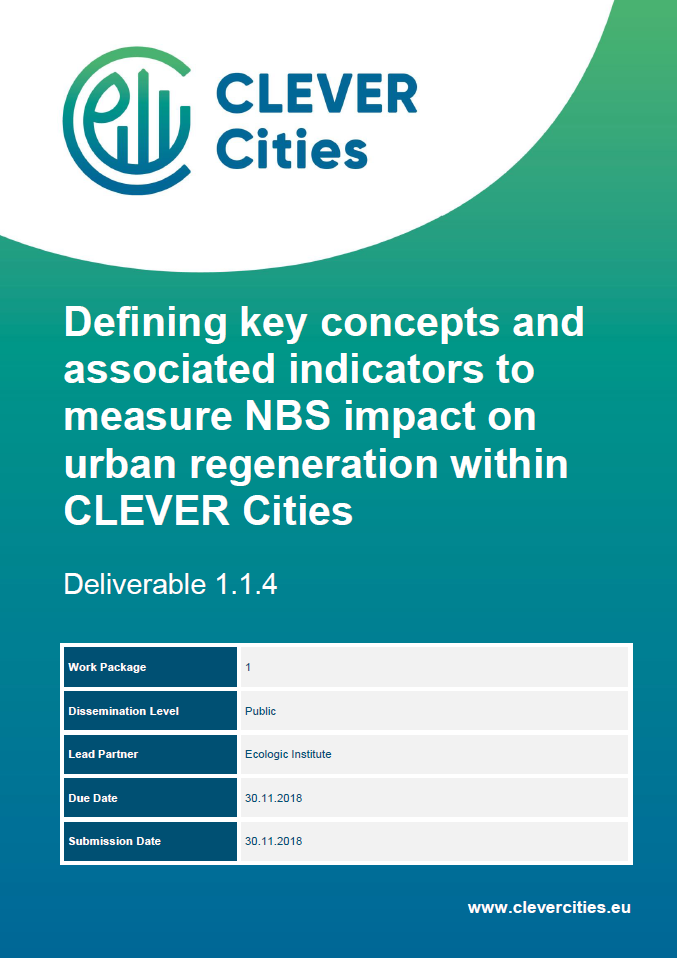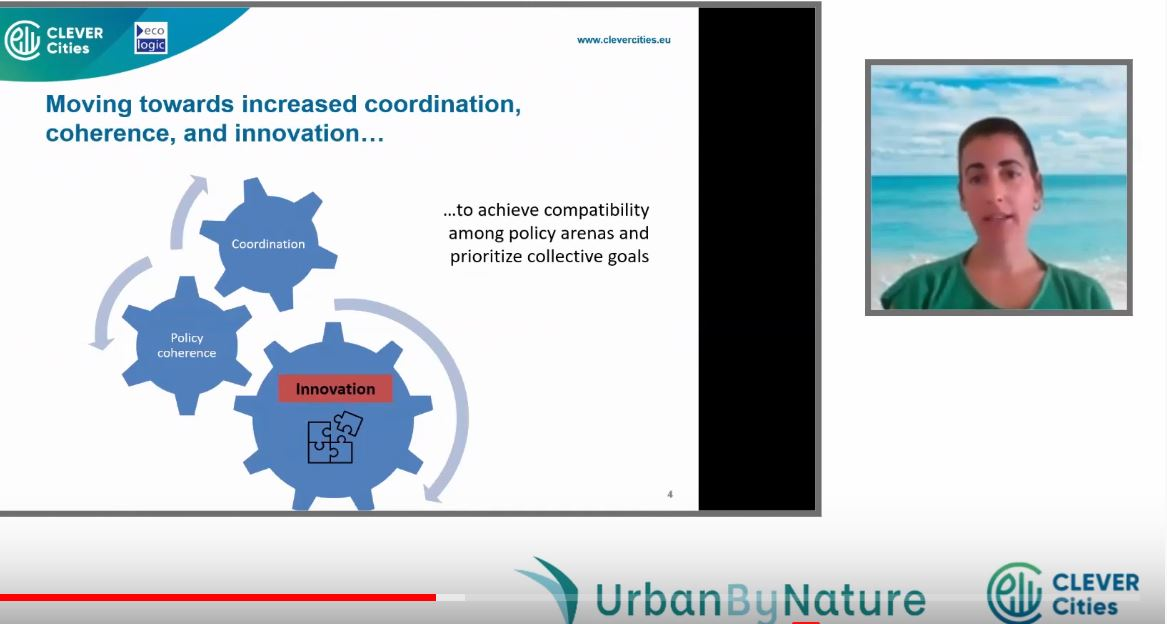Defining Key Concepts and Associated Indicators to Measure NBS Impact on Urban Regeneration within CLEVER Cities
CLEVER Cities Deliverable 1.1.4
- Publication
- Citation
Davis, M; Mederake, L; McFarland, K; McGlade, K; Skodra, J; Moebus, S (2018). Defining key concepts and associated indicators to measure NBS impact on urban regeneration within CLEVER Cities. Deliverable 1.1.4, CLEVER Cities, H2020 grant no. 776604.
This deliverable explores four key social and economic facets of NBS in the context of urban regeneration, namely: human health and well-being; sustainable economic prosperity; social cohesion and environmental justice; and citizen safety. It defines each concept and proposes indicators for measuring their impact in order to create a shared understanding and common approach within the CLEVER Cities project. Purely environmental aspects and indicators are beyond the scope of this document and are explored elsewhere in the project.
The respective thematic sections have been designed to each be able to serve as a stand-alone factsheet for wider dissemination and include: a definition of terms, links with the planned NBS interventions in the frontrunner cities, a list of priority indicators recommended for measuring impact within the project, and considerations when selecting and applying these indicators in practice. The indicators in each thematic area are prioritised on a three-tiered scale, based on the ease of methods for data collection, availability of data from existing sources, and their relevance across cities given the context and objectives of CLEVER Cities. The information presented was collected on the basis of a grey and scientific literature review, exchange with other ongoing nature-based solution and/or green infrastructure-focused European projects, and expert input from the CLEVER Cities Advisory Board.
The document highlights the interlinkages of the four NBS impact areas within the context of urban regeneration. In terms of practical feasibility, the review emphasised that data is not always easily available at the right scale, and sometimes at all. At the same time, dedicated data collection is time and resource intensive. Additionally, it is often challenging to prove causality and measure the impact of specific local NBS, not least in CLEVER Cities due to the short timeframe of the project relative to the longer timeframe of evoking measurable impacts and the issue of physical scale (e.g. NBS being implemented within a single schoolyard, but data only being available on a city-wide, municipal or national scale), amongst other considerations.














